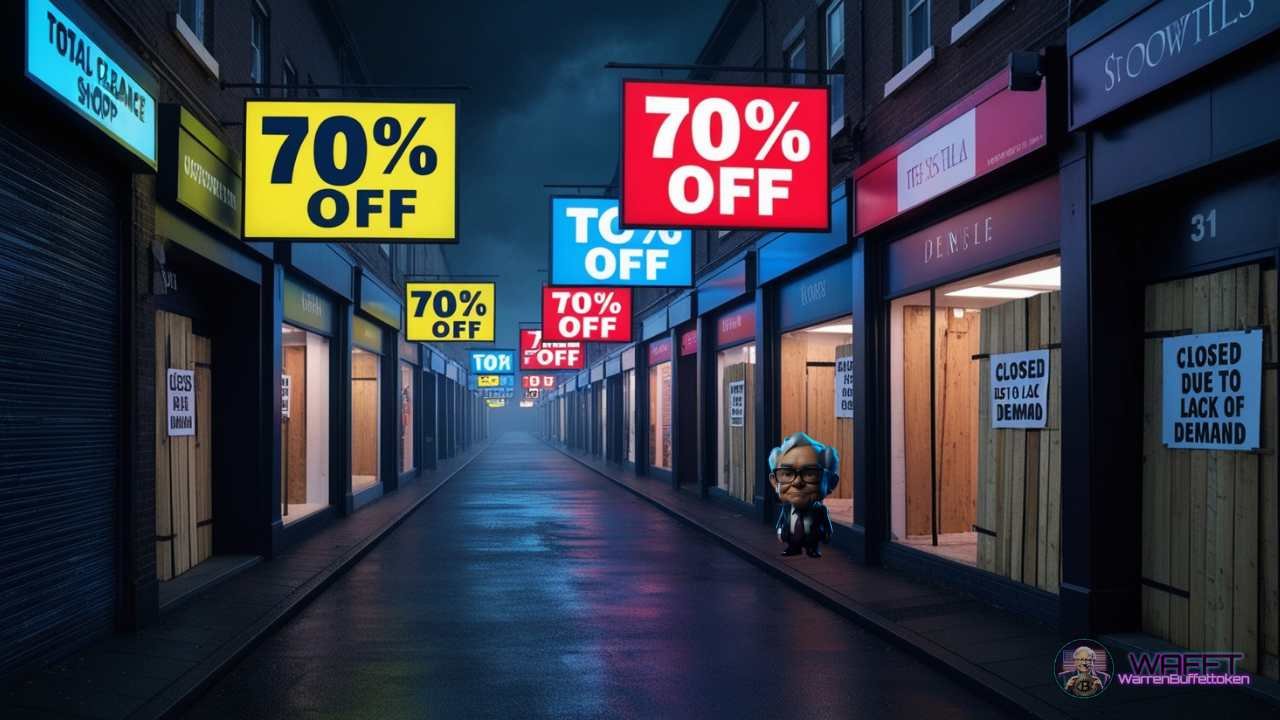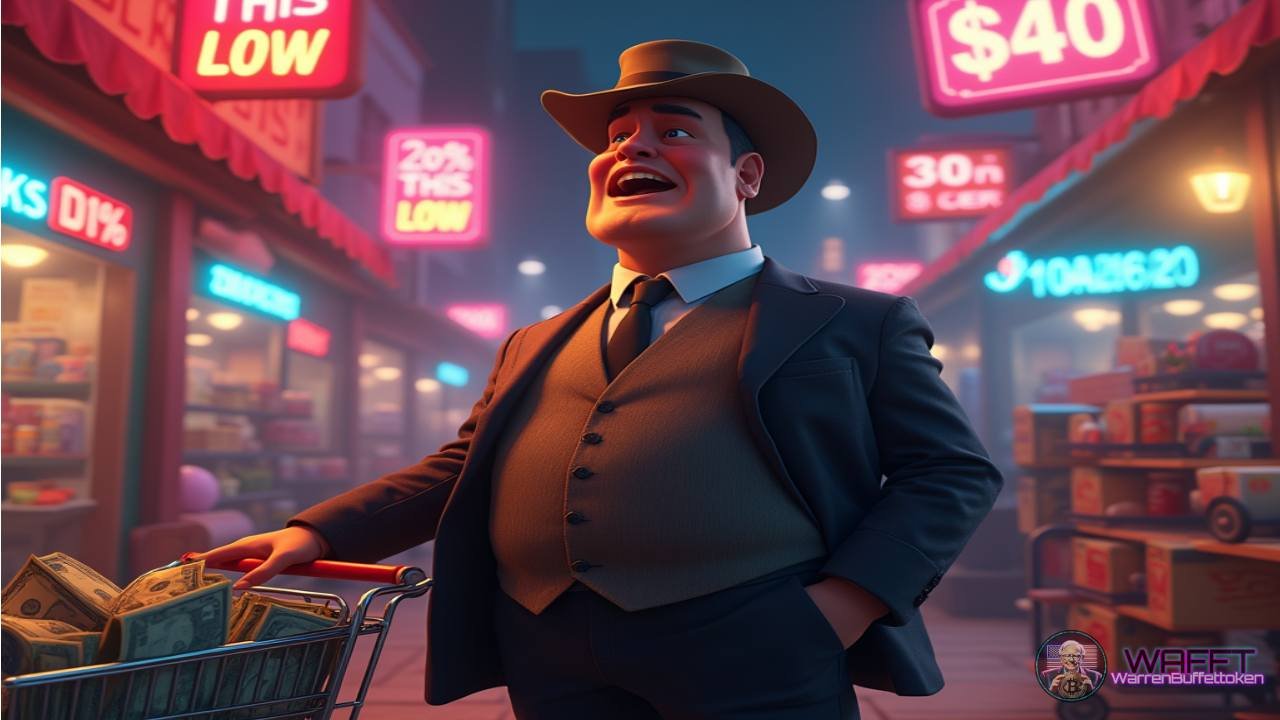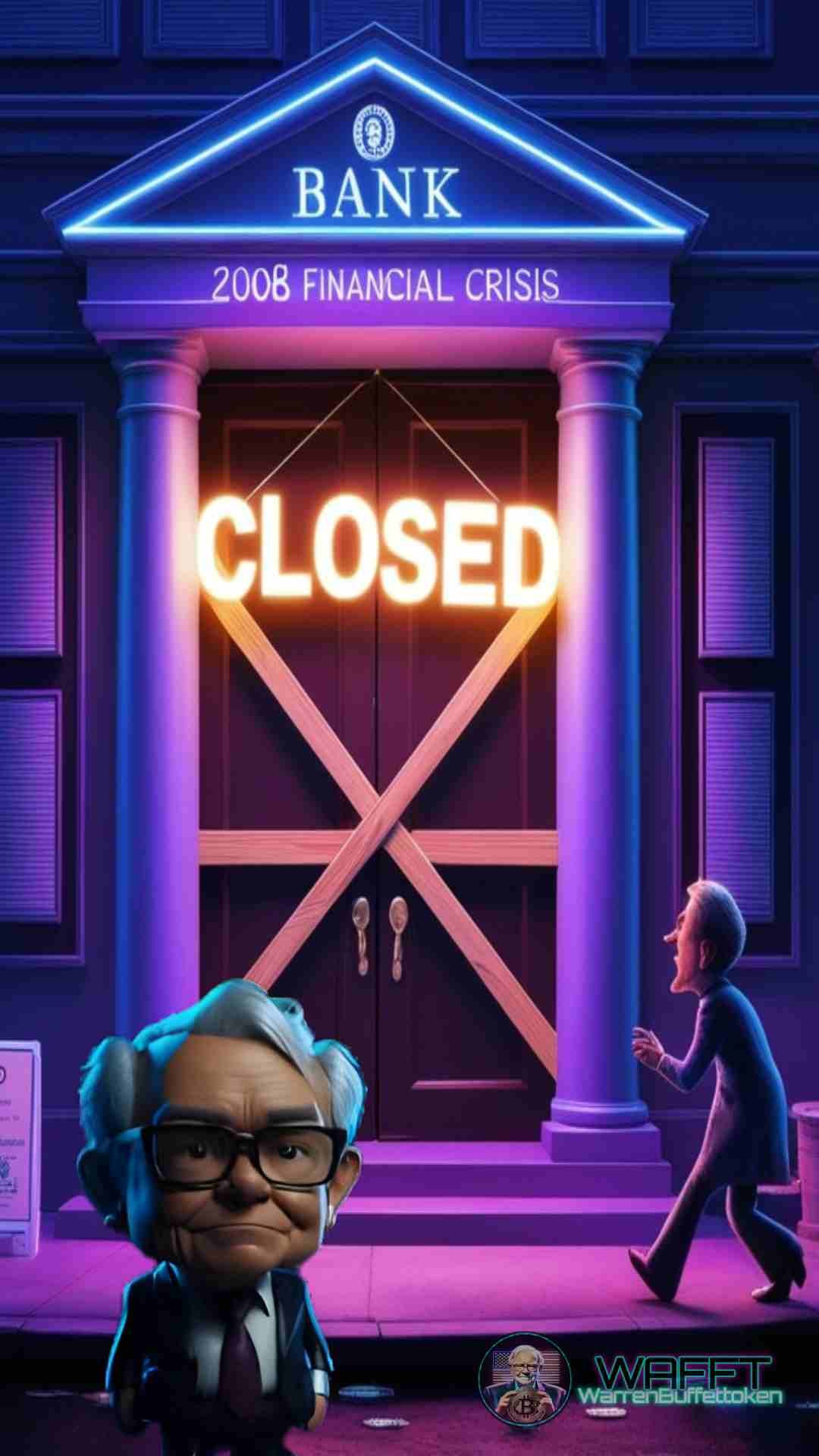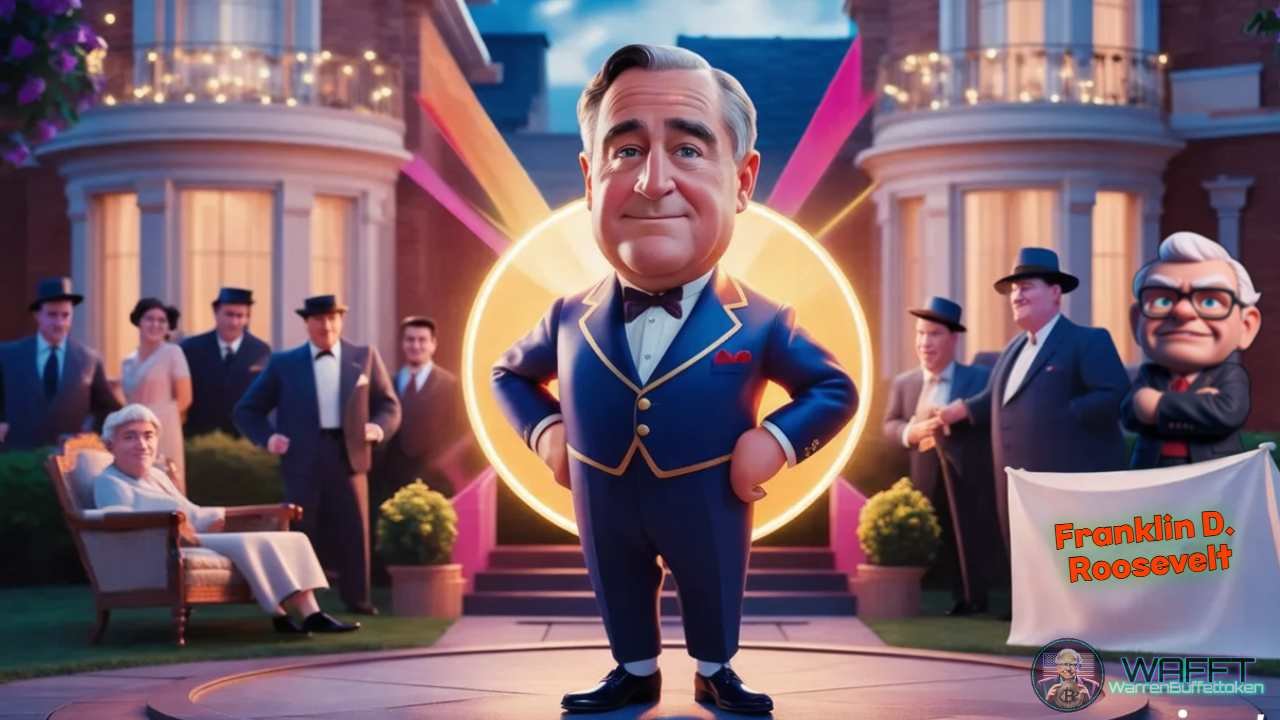Deflation:
Deflation: The Dark Side of Economics 📉💣

When we think of economic problems, most of us imagine uncontrolled inflation, with prices rising at the speed of light, as if our money evaporated every time we open our wallet. But what few people know is that there is another economic phenomenon that is just as dangerous: deflation. And no, it is not just a simple drop in prices, but a much more complex process that can lead an entire economy to collapse.
Yes, deflation sounds good at first: prices fall, you can buy more with your money! 😍 But the reality is that when there is a widespread and prolonged drop in prices, the consequences can be devastating.
Let’s find out why, its causes, consequences, and how some of the most influential people in history have dealt with this phenomenon.
What is Deflation and Why is it So Dangerous?🧐😱
At first glance, it might seem like deflation is a good thing. Who wouldn’t like prices to go down? Everyone could buy more stuff with less money! But, in reality, it’s a symptom that the economy is in trouble. 😵
Here are some of the most serious consequences of deflation:
1. Lower Consumption:
If you know that prices are going to continue to fall, why buy something today if it will be cheaper tomorrow? That’s what people do: they delay their purchases hoping that prices will continue to fall. This reduces demand even more and makes the crisis worse.
2. Unemployment:
When companies see that their products are not selling, they start to reduce costs… and the first cut is usually in personnel. This means more unemployment, which generates even less consumption and a vicious circle that is very difficult to break. 🏚️
3. More Expensive Debts:
Even if prices fall, debts do not disappear. If you have taken out a loan, you will have to pay it back at the original value, but now your money is worth more, which means that your debt is actually harder to pay off. This can lead to bankruptcies, both for individuals and companies. 💸
(Deflation is the sustained decrease in the prices of goods and services in an economy over a long period of time. This sounds like good news, but in the economic world, appearances can be deceiving).
Under normal conditions, prices can fall due to improvements in technology or greater efficiency. However, when deflation becomes structural, it is a sign that something is very wrong. Why? Because when prices fall, companies make less money, which leads to layoffs, wage cuts, and a spiral that destroys the economy from within. 💥
Unlike inflation, where things become more expensive and money loses value, with deflation, your money is worth more. Sounds good! But if everyone expects prices to continue to fall, what do people do? They delay their purchases, hoping for better prices in the future. This leads to a vicious circle: less consumption, less income for companies, which lay off more people, less investment, and so on.
In short, although buying more with less sounds ideal, deflation is an economic disaster. If it continues for a long time, it can be difficult to reverse, as we will see in some of the most important historical examples.
Why does deflation occur? 🔍
The causes of deflation are varied, but it usually has to do with something not going well in the economy.
Here are some of the most common reasons:
1. Insufficient Demand:
In ahealthy economy, people consume and businesses invest. But if demand plummets, either due to a recession or a crisis, prices begin to fall. If consumers think prices will continue to fall, they postpone their purchases even further, making the situation worse.
2. Excess Supply:
Imagine that businesses have invested a lot of money in production, but suddenly demand disappears. There is a lot of product, but few buyers. What do businesses do? They reduce prices to try to sell, which creates a deflationary cycle in key sectors.
3. Restrictive Monetary Policies:
When central banks raise interest rates or restrict access to credit, there is less money in circulation, which can lead to deflation. This happened in the 1930s, during the Great Depression, when banks were unable to expand the amount of money in circulation.
4. Massive Debt:
Economies that suffer from excessive debt often end up in deflation. Why? Because instead of spending, consumers and businesses try to pay off their debts, which reduces demand and pushes prices down.
When prices fall! Historical examples of deflation 📉💸

1. The Great Depression (1930s) 😱
This is, without a doubt, the most famous case of deflation in history. After the famous New York Stock Exchange crash of 1929, the US economy (and that of many other countries) collapsed like a house of cards. During the 1930s, prices fell like crazy 📉. People stopped spending, businesses closed, and banks ran out of money. It was a vicious circle: with low prices, businesses earned less, people lost their jobs, and, having no money, they spent even less.
To give you an idea, prices in the US fell by more than 20% during those years. A real economic disaster! 🏚️
2. The Japanese deflation (1990s onwards) 🗾
Japan has had its share of deflation too. After the real estate bubble burst in the 1990s, the Japanese economy entered what some call «The Lost Decade« (although it actually lasted more than ten years, oops 🙃). During that time, prices began to slowly decline. Although it was not as dramatic as the Great Depression, deflation persisted for a long time, affecting economic growth.
Despite the Japanese government’s efforts to stimulate the economy, such as lowering interest rates and printing more money, prices failed to rise 📉.
Consumers and businesses became accustomed to prices falling, so they postponed purchases and investments, hoping for lower prices in the future. A vicious cycle that was hard to break! 🔄
3. The Global Financial Crisis (2008-2009) 💥

During the 2008 financial crisis, when global markets collapsed following the collapse of Lehman Brothers, some countries experienced a brief episode of deflation. In the US, for example, there was a momentary drop in prices due to the sharp drop in demand and lack of confidence in the economy.
Although it was not as long-lasting as in the Great Depression or in Japan, it was a sign that deflation could still appear in modern times. Governments and central banks acted quickly, pumping tons of money into the economy 💰(That is the solution they have for everything, at the same time our money is worth less, how long will these types of strategies be viable?) to prevent deflation from taking hold. And it worked! 🙌
4. Deflation in the Eurozone (2014-2015) 🇪🇺
After the debt crisis in Europe, some Eurozone countries began to flirt with deflation. Prices fell in several countries, especially in Spain, Italy and Greece, due to weak domestic demand and high public debt. This put European economists on red alert 🚨. The European Central Bank had to act quickly with aggressive policies to avoid a deflationary spiral.
They eventually got the situation under control, but it was a clear warning that deflation is not a thing of the past.
So why is deflation bad? 🤔
At first glance, it may seem like deflation is a good thing. Prices are falling, great! 🎉 But in reality, if prices keep falling, businesses earn less, which can lead to layoffs and less investment. Plus, consumers often delay their purchases waiting for prices to fall even further, which ultimately hurts the economy. A real mess! 😵💫
As you can see, deflation has been a protagonist at several key moments in economic history. And while it sounds tempting to pay less for things, its long-term effects can be disastrous for the global economy 🌍. So let’s hope it doesn’t creep back into our lives anytime soon! 🤞
A little bit of inflationary history 🏛️📜

Key Figures in the Fight Against Deflation 🦸♂️
Throughout history, many economists and leaders have fought against deflation, as controlling it is one of the greatest challenges for any government or central bank.
Here are some influential figures:
John Maynard Keynes:
This famous British economist argued that in times of crisis, the government should intervene in the economy, increasing public spending to stimulate demand and stop deflation. His ideas were the basis of the »New Deal» in the United States during the Great Depression. 🌍
Franklin D. Roosevelt:
The president of the United States during the Great Depression, Roosevelt implemented a series of policies called the New Deal that created jobs and promoted public spending to combat deflation. It was one of the largest government interventions in modern economic history. 💼
Shinzō Abe:
Prime Minister of Japan, implemented Abenomics in 2012, a package of measures to try to get Japan out of its long deflation. It combined monetary and fiscal stimulus and structural reforms to revitalize the Japanese economy. Although it was not a complete success, it marked an important attempt to combat this problem. 📈
How do we get out of deflation? 🚀
Getting out of deflation isn’t easy, but central banks have some tools to do it:
Lower interest rates:
- Central banks can lower interest rates to encourage borrowing and spending. The idea is that if money is cheaper, people and businesses will borrow and invest more, which stimulates the economy.
Print more money:
- They can also choose to inject more money into the economy, through policies like »quantitative easing». This basically increases the amount of money in circulation to encourage spending and raise prices.
Government spending:
- Governments canincrease their spending on infrastructure, education or health, creating jobs and stimulating demand. »Keynes» defended this tooth and nail, arguing that in times of crisis, only the government can get the economy moving.
Conclusion: Deflation, the «Silent Villain» You Don’t Want in Your Life 😱
Unlike inflation, which feels like an obvious increase in prices, deflation is much quieter and more dangerous. Although it may seem like a positive thing in the short term, the truth is that it destroys jobs, reduces consumption, and can bring the economy to a standstill.
The goal of central banks is always to avoid extremes: neither runaway inflation nor deep deflation. The best is a balance that allows the economy to grow steadily.
So next time you hear about deflation, you know that even though prices are falling, it’s not always a cause for celebration. Red alert! 🚨


